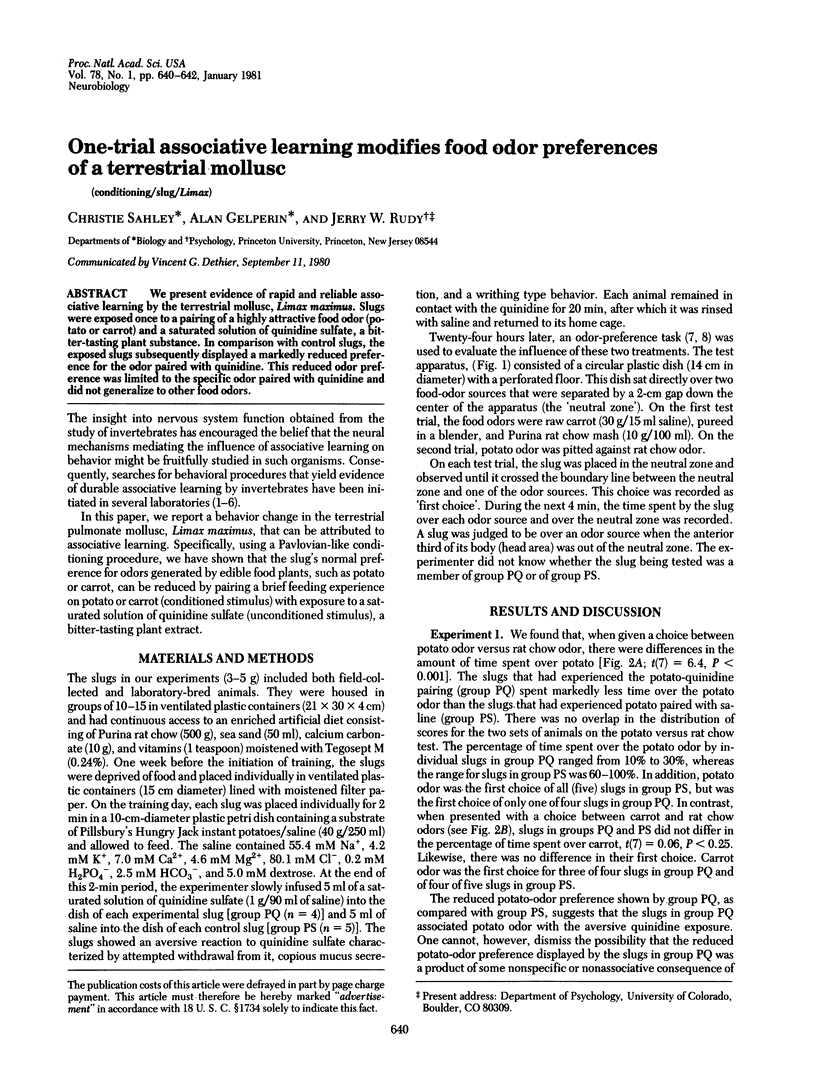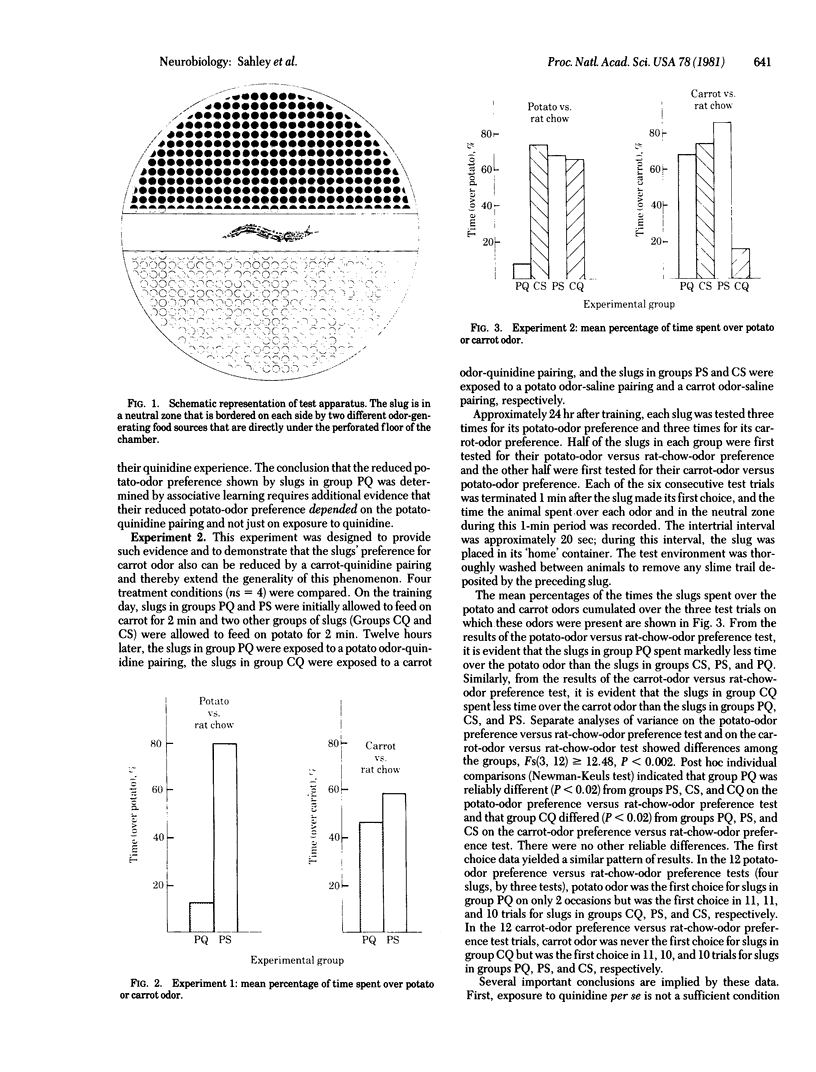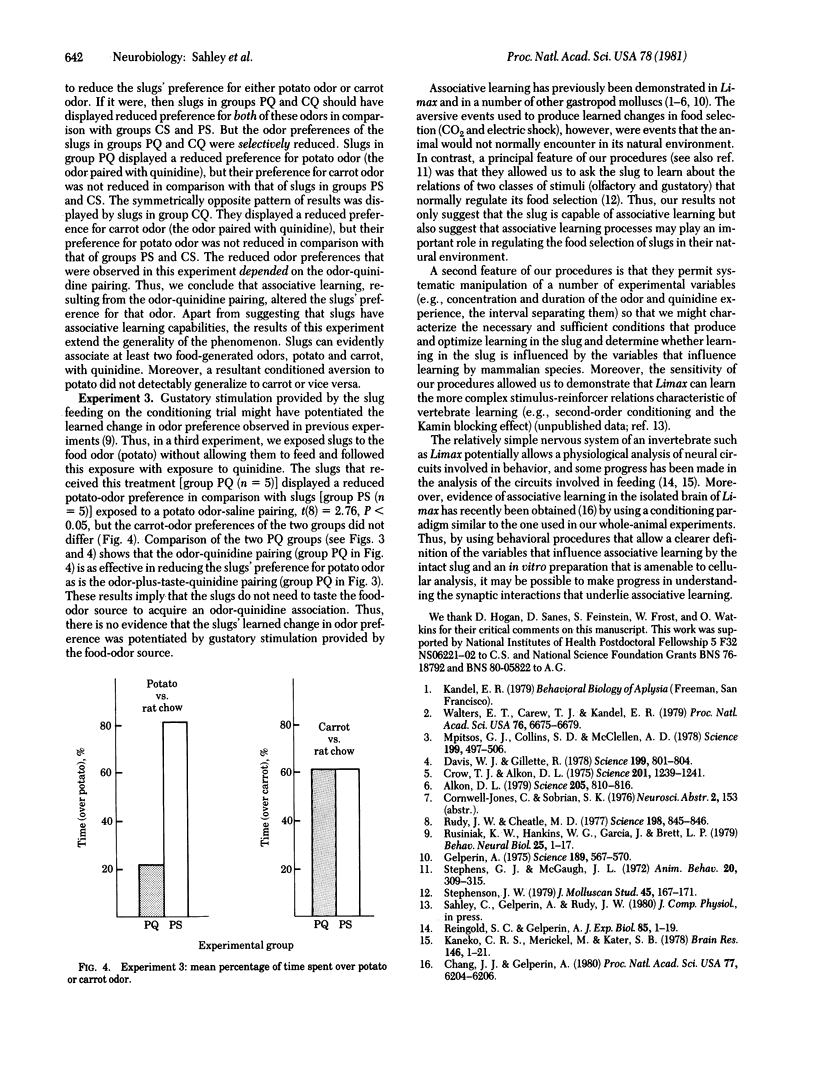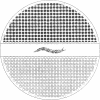Abstract
We present evidence of rapid and reliable associative learning by the terrestrial mollusc, Limax maximus. Slugs were exposed once to a pairing of a highly attractive food odor (potato or carrot) and a saturated solution of quinidine sulfate, a bitter-tasting plant substance. In comparison with control slugs, the exposed slugs subsequently displayed a markedly reduced preference for the odor paired with quinidine. This reduced odor preference was limited to the specific odor paired with quinidine and did not generalize to other food odors.
Keywords: conditioning, slug, Limax
Full text
PDF


Images in this article
Selected References
These references are in PubMed. This may not be the complete list of references from this article.
- Alkon D. L. Voltage-dependent calcium and potassium ion conductances: a contingency mechanism for an associative learning model. Science. 1979 Aug 24;205(4408):810–816. doi: 10.1126/science.223244. [DOI] [PubMed] [Google Scholar]
- Chang J. J., Gelperin A. Rapid taste-aversion learning by an isolated molluscan central nervous system. Proc Natl Acad Sci U S A. 1980 Oct;77(10):6204–6206. doi: 10.1073/pnas.77.10.6204. [DOI] [PMC free article] [PubMed] [Google Scholar]
- Crow T. J., Alkon D. L. Retention of an associative behavioral change in Hermissenda. Science. 1978 Sep 29;201(4362):1239–1241. doi: 10.1126/science.694512. [DOI] [PubMed] [Google Scholar]
- Davis W. J., Gillette R. Neural correlate of behavioral plasticity in command neurons of Pleurobranchaea. Science. 1978 Feb 17;199(4330):801–804. doi: 10.1126/science.622572. [DOI] [PubMed] [Google Scholar]
- Gelperin A. Rapid food-aversion learning by a terrestrial mollusk. Science. 1975 Aug 15;189(4202):567–570. doi: 10.1126/science.1145215. [DOI] [PubMed] [Google Scholar]
- Kaneko C. R., Merickel M., Kater S. B. Centrally programmed feeding in Helisoma: identification and chracteristics of an electrically coupled premotor neuron network. Brain Res. 1978 May 5;146(1):1–21. doi: 10.1016/0006-8993(78)90214-7. [DOI] [PubMed] [Google Scholar]
- Mpitsos G. J., Collins S. D., McClellan A. D. Learning: a model system for physiological studies. Science. 1978 Feb 3;199(4328):497–506. doi: 10.1126/science.622551. [DOI] [PubMed] [Google Scholar]
- Rudy J. W., Cheatle M. D. Odor-aversion learning in neonatal rats. Science. 1977 Nov 25;198(4319):845–846. doi: 10.1126/science.918668. [DOI] [PubMed] [Google Scholar]
- Rusiniak K. W., Hankins W. G., Garcia J., Brett L. P. Flavor-illness aversions: potentiation of odor by taste in rats. Behav Neural Biol. 1979 Jan;25(1):1–17. doi: 10.1016/s0163-1047(79)90688-5. [DOI] [PubMed] [Google Scholar]
- Walters E. T., Carew T. J., Kandel E. R. Classical conditioning in Aplysia californica. Proc Natl Acad Sci U S A. 1979 Dec;76(12):6675–6679. doi: 10.1073/pnas.76.12.6675. [DOI] [PMC free article] [PubMed] [Google Scholar]





